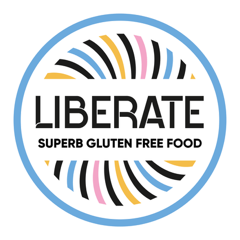
You Have to Go Gluten-Free. Now What?
If you have just been told that you need to follow a gluten-free diet, you might be feeling overwhelmed (and possibly a bit dismayed). Whether it's due to coeliac disease, a gluten sensitivity, or a lifestyle change, the transition can feel daunting at first. But not to worry—going gluten-free is absolutely manageable with the right guidance, a little label reading, and some delicious swaps. In fact, you might just discover a new favourite breakfast or family dinner in the process.
Here are our top tips for navigating the early days of being newly gluten-free—with a focus on practical strategies, family-friendly solutions, and (most importantly) finding food that still tastes great.
1. Find Gluten-Free Alternatives for Your Go-To Products
One of the most important first steps is to find suitable gluten-free alternatives for the products you and your family already love. There’s no need to start from scratch or give up your favourites!
If your mornings used to start with English muffins or crumpets, obviously that’s where we come in. We offer delicious gluten-free Crumpets, gluten-free English Muffins, and gluten-free Waffles that are so good that even gluten-eaters won’t notice the difference. That means no need to make separate meals for you and the rest of the family—everyone can enjoy breakfast together without compromise.
By starting with familiar, easy-to-love staples, the transition becomes much smoother for both you and your household.
2. Scour Your Pantry for Hidden Gluten
Going gluten-free isn’t just about switching out bread and pasta. It’s also about learning where gluten hides. Many pantry staples and condiments contain wheat or gluten-based ingredients that aren’t immediately obvious.
When you're newly gluten-free, it's a smart idea to spend some time reading the labels of your pantry items. Common culprits include:
-
Soy sauce (often made with wheat—look for tamari or gluten-free soy sauce)
-
Stock powders or cubes
-
Pre-made spice mixes
-
Salad dressings and sauces
-
Gravy mixes
-
Breakfast cereals
It’s also helpful to separate gluten-containing foods from gluten-free products in your kitchen to avoid cross-contamination. Consider creating a dedicated gluten-free shelf or drawer for peace of mind.
3. Research Local Takeaway and Dining Options
Takeaway night doesn’t have to be cancelled just because you’re gluten-free. More and more restaurants are offering gluten free alternatives—but it takes a little research to know where to go.
Start by making a list of your favourite local takeaway spots and checking their websites or calling to ask about their gluten-free options. Look out for restaurants that:
-
Mark gluten-free items clearly on their menu
-
Offer a dedicated gluten-free kitchen or prep area
-
Are willing to make adjustments or substitutions
Some safe bets include Thai, Indian, and Mexican cuisines, which often have naturally gluten-free dishes (like rice noodles, curries, or corn tortillas). But always double-check—especially when it comes to sauces and marinades.
Tip: join a few local coeliac or gluten-free Facebook groups for restaurant recommendations in your area. Fellow gluten-free diners are often the best source of trustworthy advice.
4. Involve the Whole Family
Being gluten-free can feel isolating at first—but it doesn’t have to be. Instead of making separate meals, try making dishes the entire family can enjoy. With products like Liberate Gluten-Free Crumpets and English Muffins, you can create breakfasts and snacks that suit everyone. Getting kids involved in the kitchen also helps them feel included, normalises the gluten-free experience, and it makes the lifestyle change a little more fun for everyone.
We have outlined some easy and unique ways to enjoy our Crumpets and English Muffins in the linked blog articles.
5. Be Kind to Yourself
Finally, remember that becoming newly gluten-free is a big lifestyle shift. You might make mistakes, accidentally eat something with gluten, or feel frustrated at times. That’s normal.
Give yourself space to learn, experiment, and grow into your new routine. Focus on the positives: you’re taking steps to improve your health and well-being, and thanks to the wealth of gluten free alternatives now available, you’re never short of delicious options.
Starting a gluten-free lifestyle might feel like a challenge, but with the right gluten-free products and support, it can also be an exciting new chapter in your food journey. Whether you're planning your next gluten-free breakfast or packing lunchboxes for gluten free kids, remember: you're not alone—and you're never far from a delicious solution.
Share
